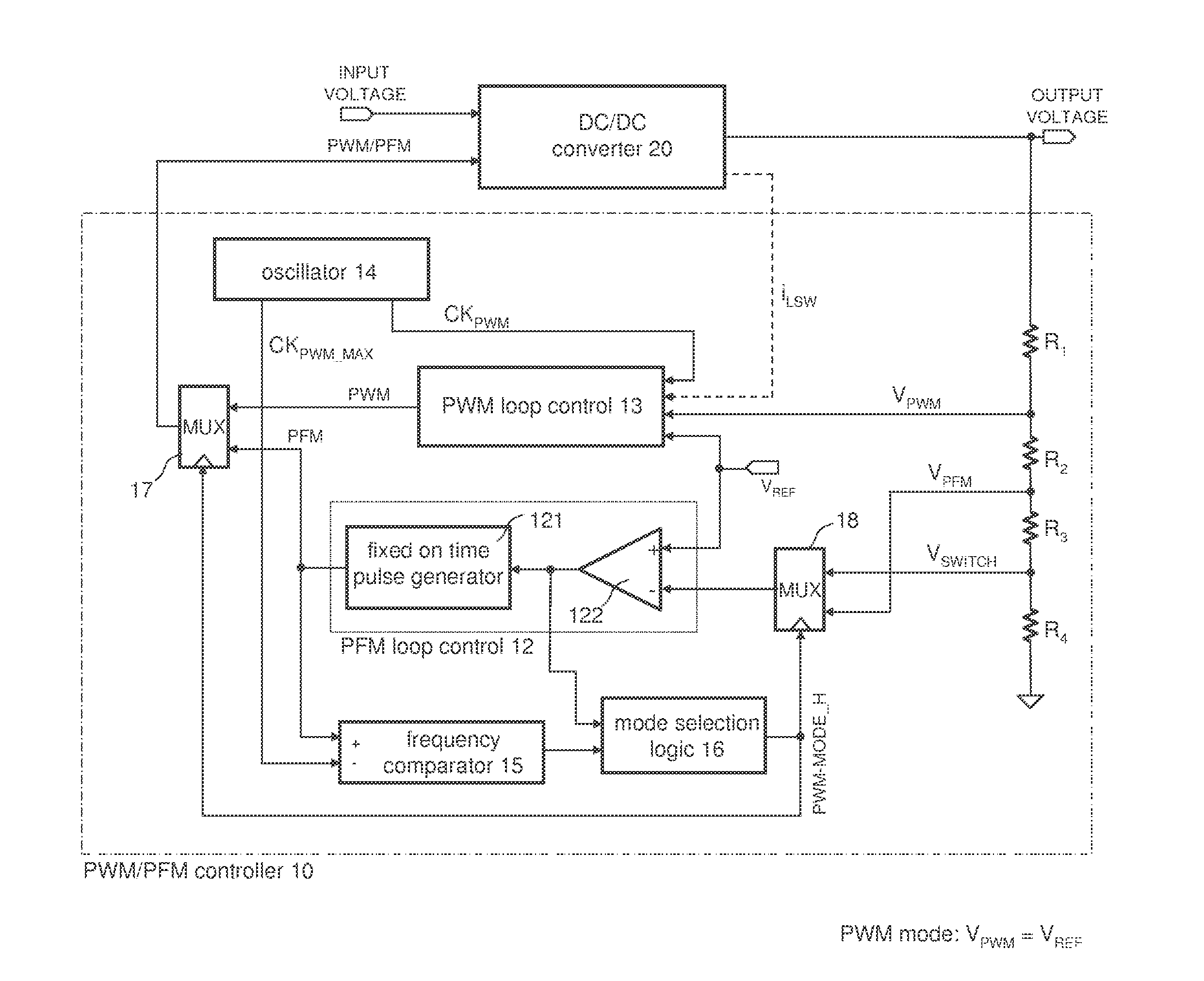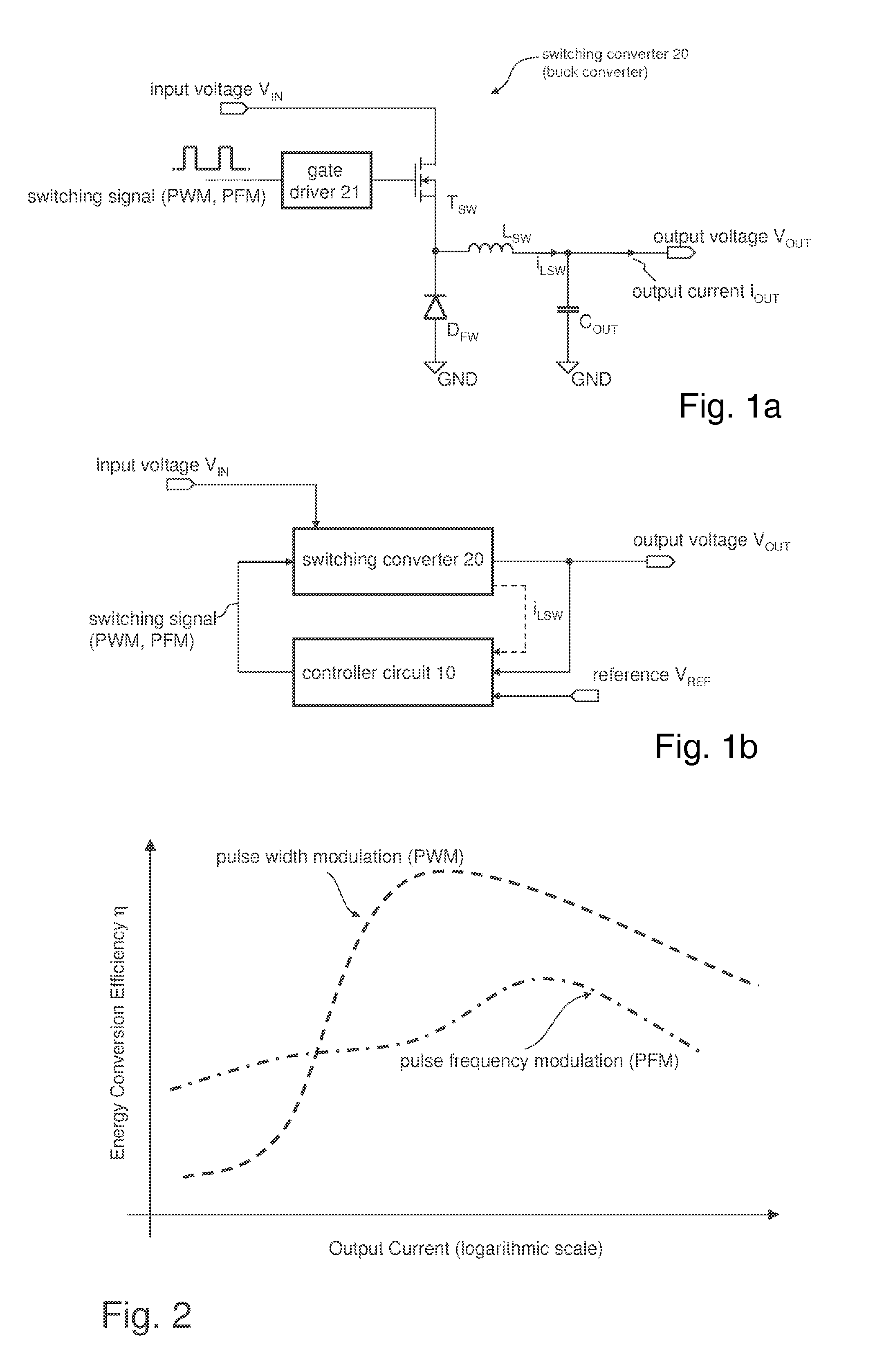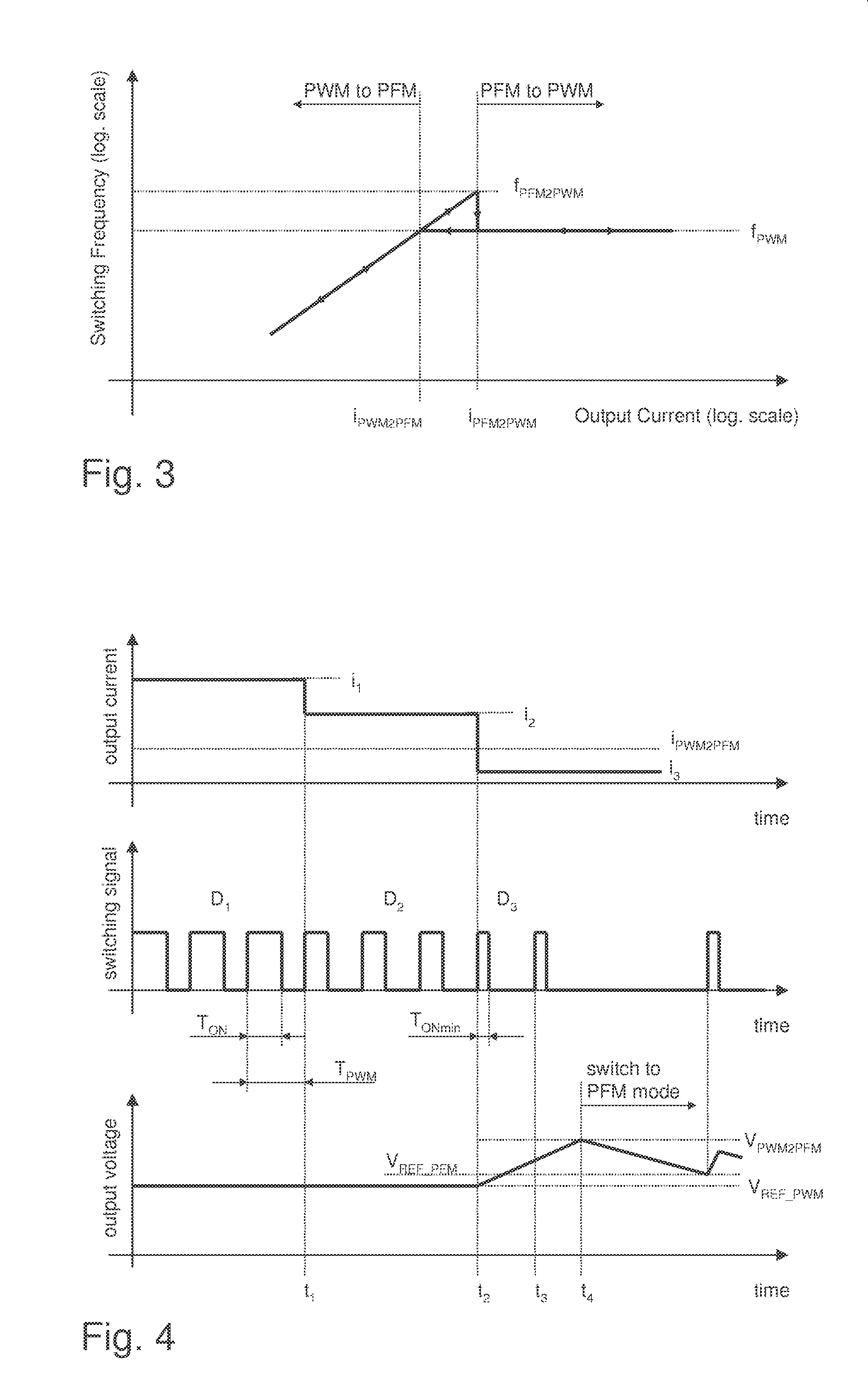Switching Mode Power Supply Control
a power supply control and switched mode technology, applied in the direction of electric variable regulation, process and machine control, instruments, etc., can solve the problems of increasing the efficiency of pfm control at high output currents, reducing the efficiency of pwm/pfm control, and reducing the efficiency of pfm control. the complexity of the implementation of such pwm/pfm controlled switching converters is undesirably high
- Summary
- Abstract
- Description
- Claims
- Application Information
AI Technical Summary
Problems solved by technology
Method used
Image
Examples
Embodiment Construction
[0018]The making and using of the presently preferred embodiments are discussed in detail below. It should be appreciated, however, that the present invention provides many applicable inventive concepts that can be embodied in a wide variety of specific contexts. The specific embodiments discussed are merely illustrative of specific ways to make and use the invention, and do not limit the scope of the invention.
[0019]FIG. 1 a illustrates the topology of a common buck converter as one example of a switching converter. However, it should be noted that the present invention is not limited to switched mode power supplies (SMPS) including buck converters. The inventive concepts may be readily applied to any type of switching converter such as boost converters, buck-boost converters, Ćuk converters, flyback converters, etc. Generally a switching converter includes at least one switching element which are, in the present example of FIG. 1, a MOS transistor TSW and a free-wheeling diode DFW...
PUM
 Login to View More
Login to View More Abstract
Description
Claims
Application Information
 Login to View More
Login to View More - R&D
- Intellectual Property
- Life Sciences
- Materials
- Tech Scout
- Unparalleled Data Quality
- Higher Quality Content
- 60% Fewer Hallucinations
Browse by: Latest US Patents, China's latest patents, Technical Efficacy Thesaurus, Application Domain, Technology Topic, Popular Technical Reports.
© 2025 PatSnap. All rights reserved.Legal|Privacy policy|Modern Slavery Act Transparency Statement|Sitemap|About US| Contact US: help@patsnap.com



